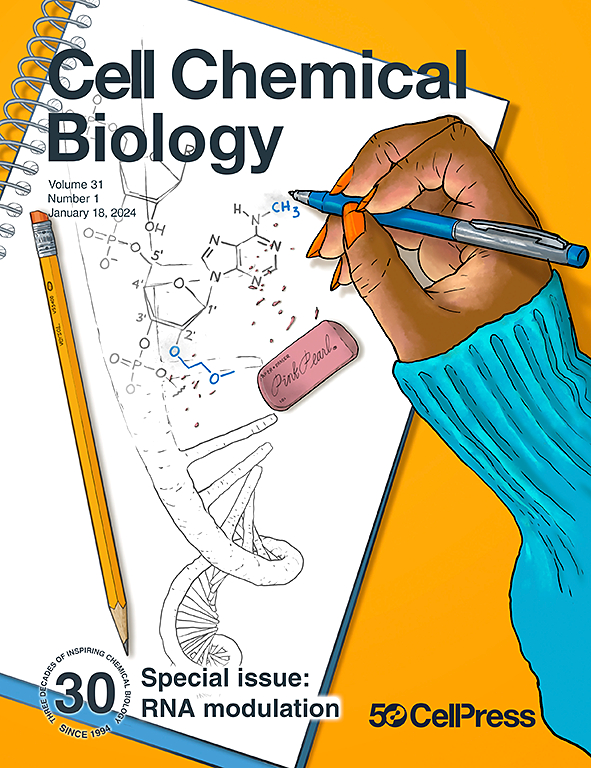CDK2 heterobifunctional degraders co-degrade CDK2 and cyclin E resulting in efficacy in CCNE1-amplified and overexpressed cancers
IF 6.6
1区 生物学
Q1 BIOCHEMISTRY & MOLECULAR BIOLOGY
引用次数: 0
Abstract
CCNE1 amplification drives aberrant CDK2-cyclin E1 activity in cancer. Despite activity of CDK2 inhibitors, their therapeutic margins are limited by poor CDK selectivity. We developed a degrader with high selectivity for CDK2 over CDK1 that also unexpectedly led to cyclin E1 degradation and potent and complete suppression of RB phosphorylation at concentrations with low CDK2 occupancy and negligible CDK1 degradation. Co-depletion of CDK2 and cyclin E1 also resensitized palbociclib-adapted breast cancer cells to cell cycle blockade. Overall, the improved potency and selectivity of the degrader for CDK2 over small-molecule inhibitors drives antiproliferative activity with greater specificity for CCNE1amp cancer cells and RB dependency. Using an orally administered degrader, we demonstrate deep and sustained RB pathway suppression, which is needed to induce stasis in CCNE1amp tumors. These results highlight the potential of this modality to target CDK2 potently and selectivity in this biomarker-defined patient population with high unmet need.

CDK2异功能降解物共同降解CDK2和细胞周期蛋白E,从而对ccne1扩增和过表达的癌症有效
CCNE1扩增导致肿瘤中CDK2-cyclin E1活性异常。尽管CDK2抑制剂具有活性,但它们的治疗范围受到CDK选择性差的限制。我们开发了一种对CDK2比CDK1具有高选择性的降解剂,这种降解剂也意外地导致了细胞周期蛋白E1的降解,并且在低CDK2占用浓度和可忽略CDK1降解的情况下,有效地完全抑制了RB磷酸化。CDK2和cyclin E1的共同耗竭也使适应帕博西利的乳腺癌细胞对细胞周期阻断重新敏感。总的来说,与小分子抑制剂相比,CDK2降解剂的效力和选择性得到了提高,从而对CCNE1amp癌细胞和RB依赖性具有更大的特异性,从而促进了抗增殖活性。使用口服降解剂,我们证明了深度和持续的RB通路抑制,这是诱导CCNE1amp肿瘤停滞所必需的。这些结果强调了这种方式在生物标志物定义的高未满足需求的患者群体中有效靶向CDK2和选择性的潜力。
本文章由计算机程序翻译,如有差异,请以英文原文为准。
求助全文
约1分钟内获得全文
求助全文
来源期刊

Cell Chemical Biology
Biochemistry, Genetics and Molecular Biology-Molecular Medicine
CiteScore
14.70
自引率
2.30%
发文量
143
期刊介绍:
Cell Chemical Biology, a Cell Press journal established in 1994 as Chemistry & Biology, focuses on publishing crucial advances in chemical biology research with broad appeal to our diverse community, spanning basic scientists to clinicians. Pioneering investigations at the chemistry-biology interface, the journal fosters collaboration between these disciplines. We encourage submissions providing significant conceptual advancements of broad interest across chemical, biological, clinical, and related fields. Particularly sought are articles utilizing chemical tools to perturb, visualize, and measure biological systems, offering unique insights into molecular mechanisms, disease biology, and therapeutics.
 求助内容:
求助内容: 应助结果提醒方式:
应助结果提醒方式:


